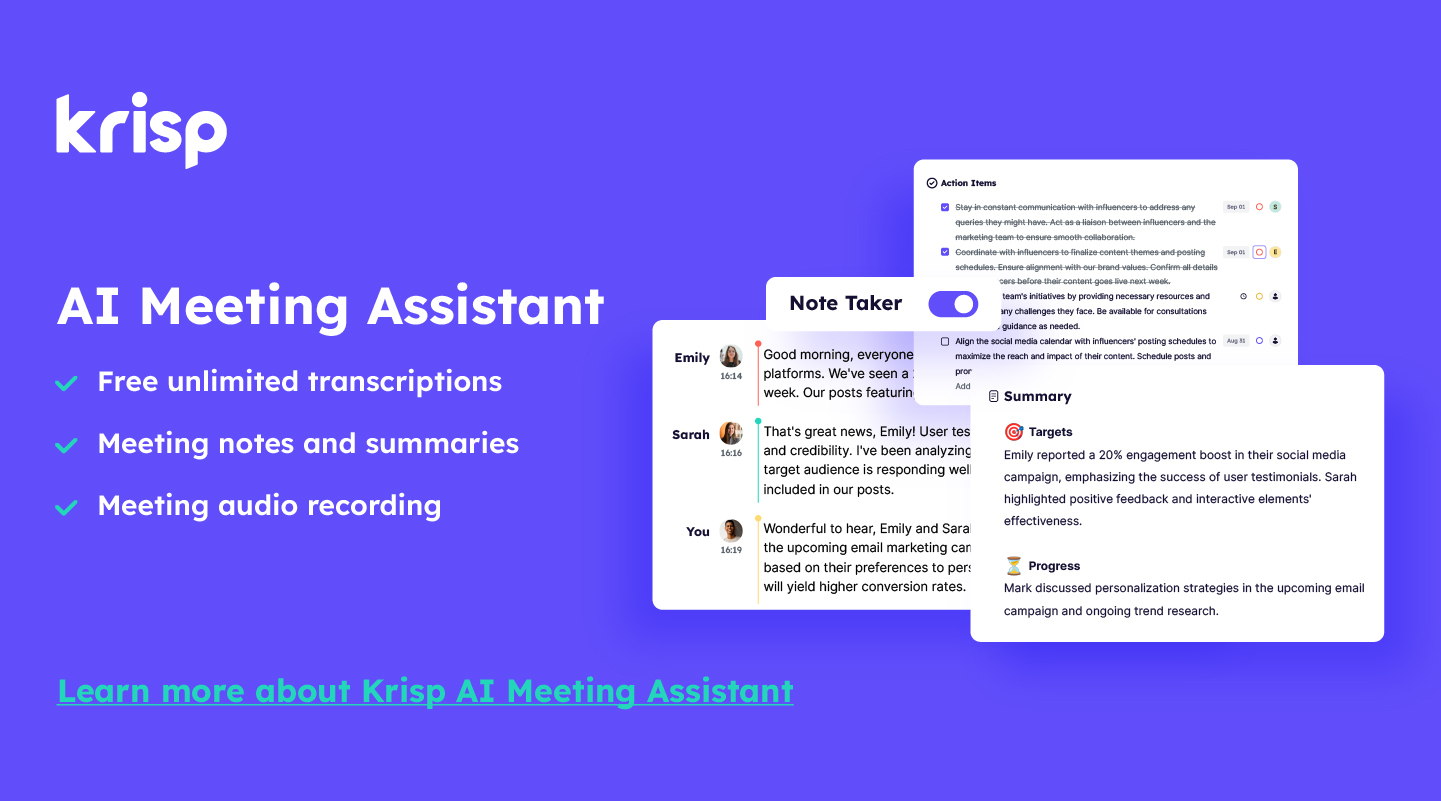Setting professional goals for work is the key to career growth, but many struggle with defining clear, actionable objectives. Without a plan, progress stalls, motivation dips, and opportunities slip away. The good news? Achieving meaningful goals doesn’t have to be overwhelming.
In this guide, we’ll break down a simple yet effective approach to setting and reaching professional goals for work, ensuring you stay on track for success. Whether you’re aiming for a promotion, skill development, or better work-life balance, you’ll learn practical steps to turn aspirations into achievements. Let’s dive in and start building a roadmap for your career growth.
Defining Your Career Objectives: A Step-by-Step Guide
Before setting professional goals for work, it’s important to have a clear understanding of what you want to achieve. Follow these steps to define your career objectives effectively:
- Self-Assessment – Identify your strengths, weaknesses, and passions. Reflect on what excites and challenges you in your career.
- Research Career Paths – Explore different opportunities in your field. Look at industry trends and job market demands.
- Set a Vision – Where do you see yourself in five or ten years? Define your long-term aspirations.
- Break it Down – Divide your vision into smaller, achievable milestones.
- Identify Skills Needed – Determine the skills and knowledge gaps that need to be addressed to reach your objectives.
Defining clear career objectives ensures that your professional goals for work align with your personal aspirations and industry requirements.
Applying the SMART Framework to Your Professional Goals
The SMART goal-setting method is a proven strategy that helps transform vague ambitions into achievable objectives. Here’s how you can apply it to your professional goals for work:
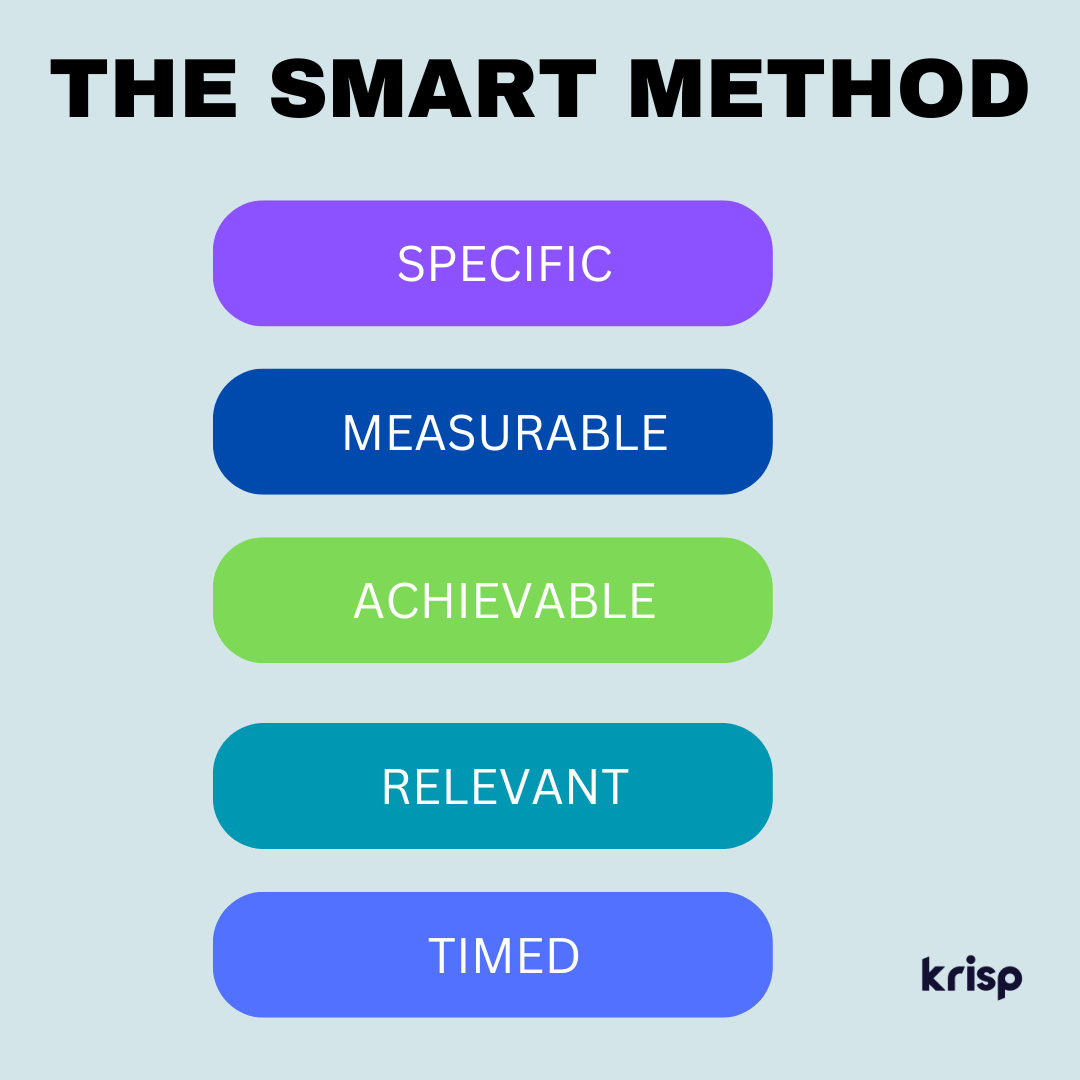
- Specific – Instead of “I want to get better at my job,” say, “I want to improve my project management skills by completing a certification course.”
- Measurable – Define criteria for success. For example, “Increase my department’s efficiency by 20% over the next six months.”
- Achievable – Ensure the goal is realistic. Setting unreasonably high expectations can lead to disappointment.
- Relevant – Your goal should align with your career objectives. If your dream is to become a senior software engineer, improving coding skills is more relevant than taking marketing courses.
- Time-bound – Set deadlines to create urgency and maintain focus. For instance, “Earn a professional certification within the next 12 months.”
By following the SMART framework, you create structured professional goals for work that keep you on track and motivated.
Short-Term vs. Long-Term Professional Goals: Finding the Balance
Balancing short-term and long-term goals ensures steady progress in your career. Here’s how they differ:
Short-Term Goals (6 months – 2 years)
These are immediate, tactical goals, such as learning a new skill, increasing work efficiency, or taking on leadership responsibilities.
Long-Term Goals (3–10 years)
These require strategic planning, such as earning a promotion, switching careers, or becoming an industry expert. To strike the right balance, align short-term professional development goals with your long-term vision. Every small milestone achieved should contribute to the bigger picture.
Breaking Down Professional Goals into Actionable Steps
A major challenge professionals face is turning large ambitions into actionable steps. Here’s how to break down your professional goals for work:
- Prioritize – Focus on the most critical goals that align with your long-term objectives.
- Create a Roadmap – Outline the steps needed to accomplish each goal.
- Set Deadlines – Assign timelines to keep yourself accountable.
- Track Progress – Regularly review and adjust your plan based on results.
- Celebrate Small Wins – Recognizing progress boosts motivation and confidence.
By taking an organized approach, you make seemingly overwhelming goals more manageable and achievable.
Staying Motivated: Tips to Keep Moving Towards Your Professional Goals
Sustaining motivation is key to long-term success. Here are some ways to stay committed to your professional goals for work:
- Visualize Success – Picture yourself achieving your goal to reinforce motivation.
- Stay Organized – Use a planner or digital tools to keep track of milestones.
- Seek Inspiration – Follow industry leaders and success stories for encouragement.
- Maintain a Growth Mindset – Embrace challenges and learn from failures.
- Find an Accountability Partner – Sharing goals with a mentor or peer increases commitment.
Staying consistent and driven will help you reach your objectives faster and with greater efficiency.
Common Challenges in Achieving Professional Goals and How to Overcome Them
Obstacles are inevitable when working towards professional goals for work. Here are some common challenges and strategies to overcome them:
Lack of Time
With multiple responsibilities, time constraints can feel overwhelming. Prioritize tasks based on urgency and impact, delegate when possible, and set aside dedicated time for goal-related activities. Using productivity techniques like the Pomodoro method or digital task managers can also enhance efficiency.
Fear of Failure
The possibility of failure can be paralyzing, preventing progress. Instead of fearing setbacks, reframe them as opportunities for growth. Analyze what went wrong, adjust your strategy, and apply lessons learned to improve future efforts. Many successful professionals attribute their achievements to lessons gained from past failures.
Loss of Motivation
Staying committed to long-term goals can be challenging, especially when progress seems slow. To maintain motivation, revisit the reasons behind your goal and visualize the benefits of achieving it. Setting short-term milestones and celebrating small wins can also help sustain enthusiasm and momentum.
Skill Gaps
A lack of necessary expertise can hinder professional growth. Identify areas for improvement and invest in learning through courses, workshops, and mentorship. Actively applying new skills in real-world situations reinforces learning and builds confidence.
External Factors
Market changes, economic shifts, and unforeseen personal circumstances can create hurdles. Adaptability is key—stay informed about industry trends, develop contingency plans, and remain open to adjusting your approach as needed. Being flexible allows you to navigate challenges and stay on track toward success.
Overcoming these barriers will make you more resilient and determined to achieve success.
Leveraging Mentorship and Networking to Reach Your Professional Goals
Mentorship and networking are powerful tools that can accelerate your career growth. Here’s how they help in achieving professional goals for work:
- Guidance from Mentors – A mentor provides valuable insights, feedback, and encouragement.
- Expanding Your Network – Connecting with industry professionals opens doors to new opportunities.
- Learning from Others – Observing successful individuals can provide inspiration and best practices.
- Career Advancement – Strong relationships can lead to job referrals, collaborations, and career growth.
Actively seeking mentorship and networking opportunities will put you on the fast track to success.
When to Reassess and Adjust Your Professional Goals
Reassessing your professional goals for work is crucial to staying aligned with your evolving aspirations. Here’s when and how to adjust your goals:
- Signs You Need to Reevaluate:
- Lack of progress despite continuous effort.
- Changing career interests or market trends.
- Feeling uninspired or dissatisfied with your current path.
- How to Adjust Goals Effectively:
- Reflect on what’s working and what’s not.
- Modify timelines and expectations based on new insights.
- Seek advice from mentors or colleagues.
- Stay open to new opportunities and alternative paths.
Flexibility in goal setting ensures you remain relevant and adaptable in your career.
Time Management Tips to Stay on Track with Your Professional Goals
Effective time management is essential for achieving professional goals. Here are strategies to help you stay focused and productive:

- Prioritize Tasks: Utilize the Eisenhower Matrix, which divides tasks into four categories—urgent and important, important but not urgent, urgent but not important, and neither urgent nor important. This will help you focus on what truly matters and avoid wasting time on less critical tasks.
- Time-Blocking: Allocate specific time slots throughout your day for focused work. This creates a sense of urgency and ensures you dedicate enough time to high-priority tasks.
- Eliminate Distractions: Minimize interruptions by turning off notifications, setting your phone to silent, and establishing clear boundaries with colleagues during your focus time.
- Pomodoro Technique: Work in short, 25-minute intervals with 5-minute breaks in between. This helps maintain focus and prevents burnout by allowing your brain to rest and recharge.
How to Measure Progress and Adjust Your Professional Goals
Tracking your progress ensures you stay aligned with your objectives. Here’s how:
- Set Key Performance Indicators (KPIs): Define measurable milestones (e.g., completing a certification or increasing sales by 20%).
- Monthly Self-Reviews: Reflect on your progress, challenges, and areas for improvement. This helps you stay on course and reassess goals if necessary.
- Seek Feedback: Regular feedback from mentors or colleagues provides fresh perspectives and guidance.
- Adjust Goals: If your goals become unrealistic or irrelevant, adjust them while keeping the larger vision in mind. This ensures continued growth and success.
Best Productivity Apps and Tools for Tracking Your Professional Goals
Several productivity tools can help streamline your goal-tracking process, enhance your efficiency, and help you stay focused. Below are some of the top apps available, each offering unique features tailored to different professional needs.
Trello
Trello is a visual task management tool that helps you organize and prioritize your projects through an intuitive and simple interface.
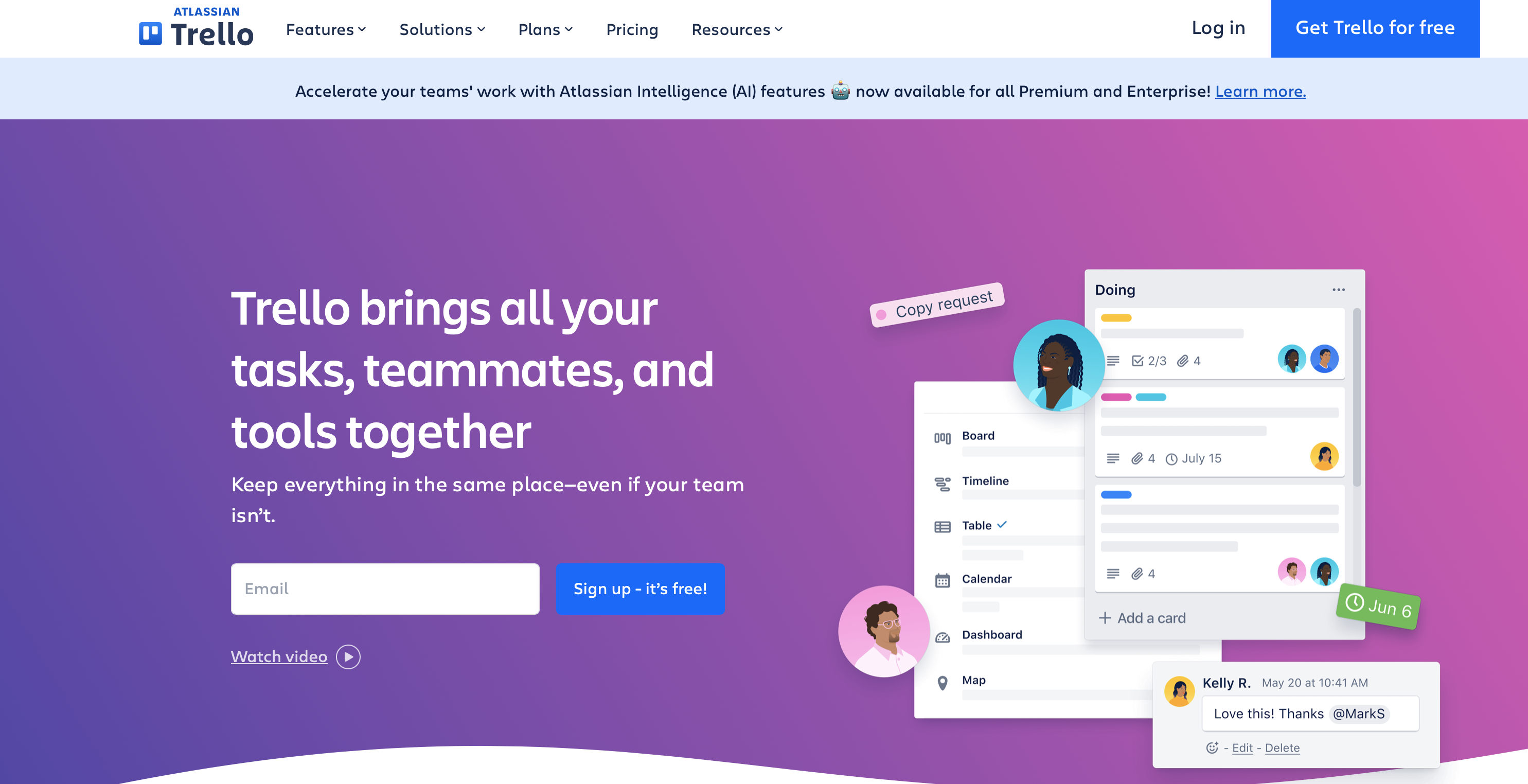
Key Features:
- Boards: Represent entire projects or overarching goals.
- Lists: Organize stages of work or categorize tasks within boards.
- Cards: Individual tasks that can be customized with deadlines, checklists, attachments, and labels.
- Power-Ups: Integrations with apps like Google Drive, Slack, and Dropbox for seamless team collaboration.
Trello is great for teams looking for a flexible and easy-to-use solution for managing projects, with a strong focus on visual organization.
Notion
Notion is an all-in-one workspace tool that allows you to create databases, notes, and templates for goal-setting and progress tracking.
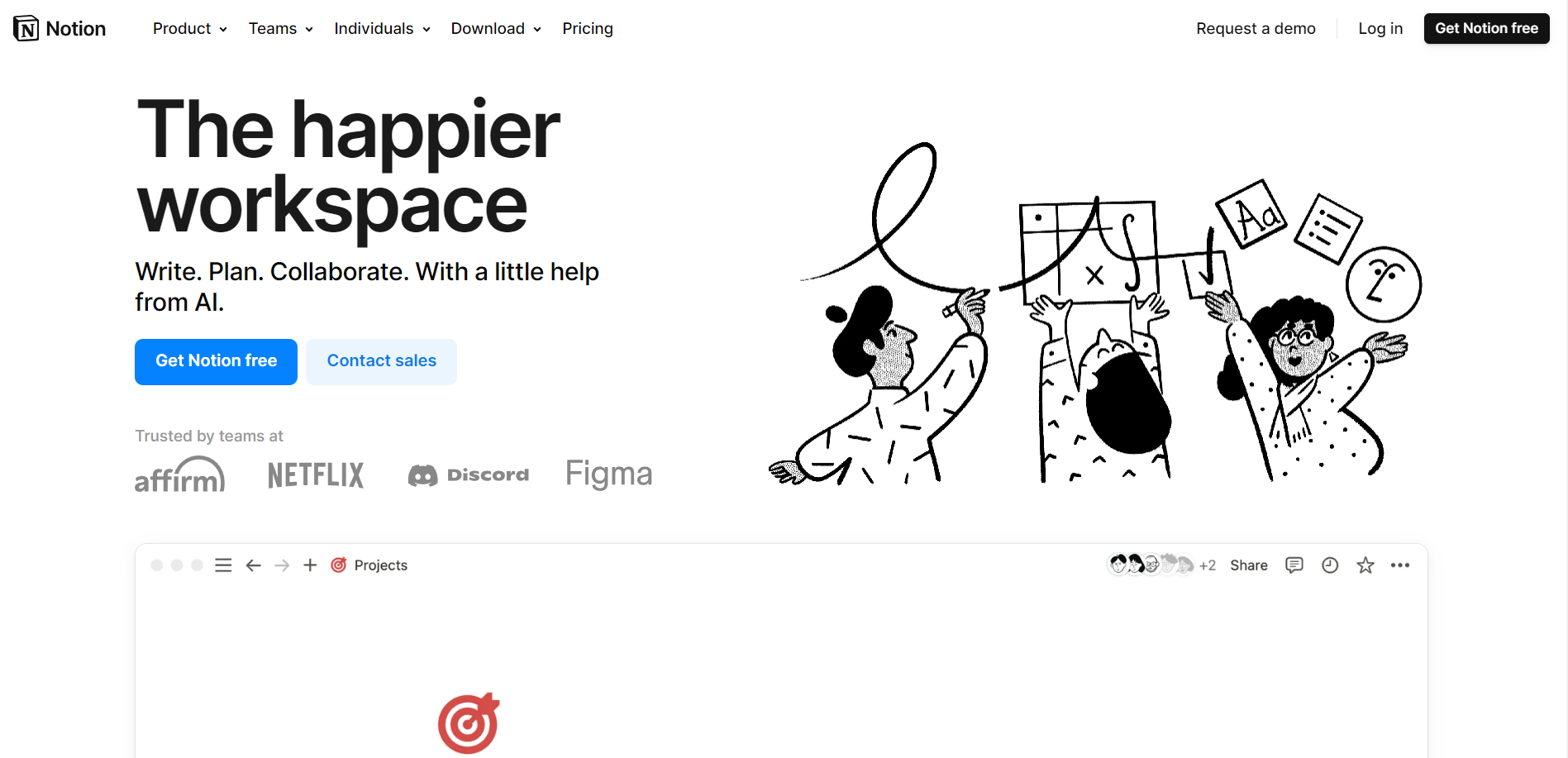
Key Features:
- Templates: Customizable templates for goal-setting and project management.
- Databases: Tables and kanban boards to track and organize progress.
- Progress Tracking: Progress bars, checkboxes, and deadlines to visualize goal completion.
- Flexibility: Fully customizable to fit your personal or team needs.
RescueTime
RescueTime helps you monitor and improve your productivity by tracking the time spent on different activities throughout the day.
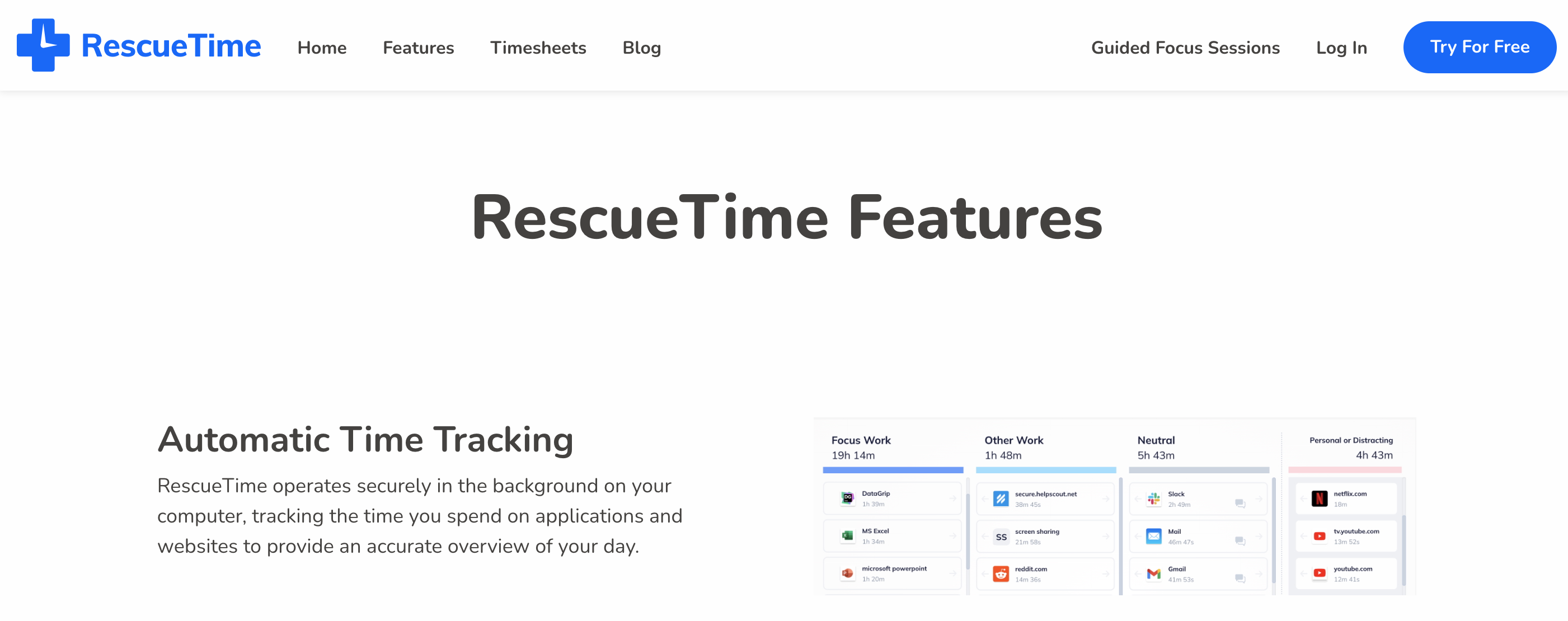
Key Features:
- Time Tracking: Automatically records how much time you spend on websites and apps.
- Reports: Provides detailed weekly productivity reports with actionable insights.
- Goals: Set daily goals for productive hours and track your success.
- FocusTime: Block distracting websites to maintain focus during work hours.
RescueTime is ideal for professionals who want to be more mindful of how they spend their time, offering deep insights into productivity patterns and helping reduce time wastage.
Krisp
Krisp is an AI-powered productivity tool designed to enhance the quality of virtual meetings and improve focus by offering a range of advanced features.
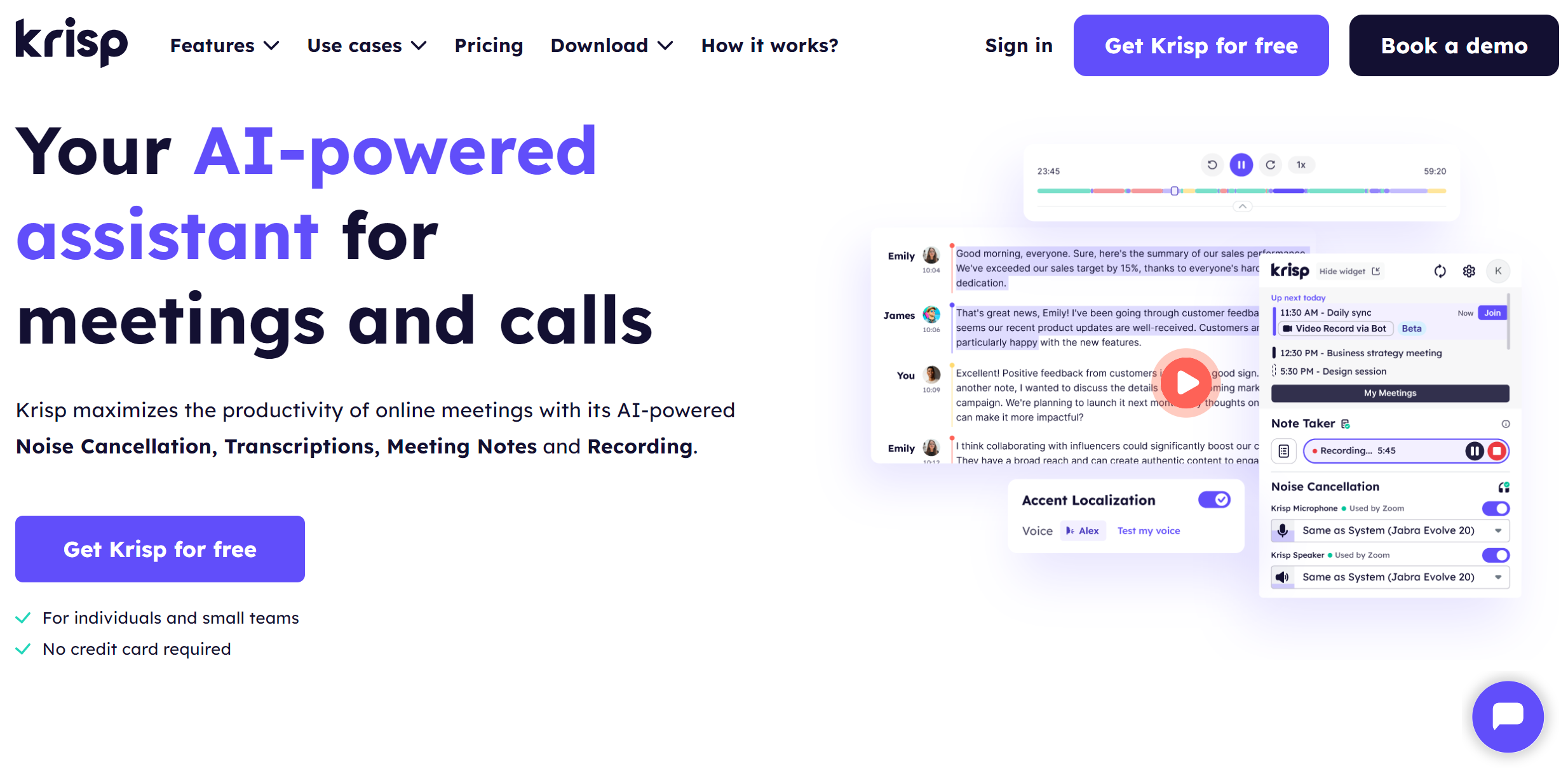
Key Features:
- AI Noise Cancellation: Removes background noises, voices, and echoes from online meetings, ensuring crystal-clear communication without distractions.
- Meeting Transcription: Automatically transcribes meetings and calls in real-time, helping individuals and teams capture every detail without missing a word.
- AI Meeting Notes and Summary: Generates meeting summaries, notes and action items, saving time on post-meeting documentation and ensuring important points are not overlooked.
- Meeting Recording: Records meetings with high clarity, making it easy to review discussions and action items later.
How Continuous Learning and Skill Development Boost Career Success
Investing in continuous learning and skill development is essential for achieving professional goals for work and advancing in your career. It helps you stay competitive, adaptable, and prepared to take on new challenges as industries evolve. Here are several effective ways to incorporate continuous learning into your career:
Online Courses
Platforms like Coursera, Udemy, and LinkedIn Learning offer a variety of online courses that align with professional goals for work. These platforms provide flexibility, enabling you to learn at your own pace while gaining expertise in areas such as technical skills, leadership, and personal development.
Reading Industry-Related Books and Articles
Staying informed by reading books, blogs, and articles related to your field is crucial for reaching your professional goals for work. Engaging with the latest trends, case studies, and best practices helps you remain adaptable and apply new concepts to your work, allowing you to meet your objectives more effectively.
Attending Workshops and Conferences
Workshops and conferences provide immersive learning experiences, giving you the opportunity to gain hands-on skills and knowledge directly from experts. These events also present excellent networking opportunities, helping you connect with peers and industry leaders who can support you in reaching your professional goals for work.
Seeking Mentorship and Coaching
Learning from more experienced professionals through mentorship or coaching can significantly accelerate your progress toward your professional goals for work. A mentor or coach can provide personalized guidance, feedback, and a broader perspective, helping you navigate challenges and make strategic decisions that align with your career aspirations.
Incorporating continuous learning into your daily routine not only boosts your skill set but also enhances your adaptability, positioning you as a strong contender for achieving your professional goals for work in an ever-evolving professional landscape.
Conclusion
Setting professional goals for work is a powerful strategy for career growth, increased productivity, and job satisfaction. So, whether you’re aiming for a leadership role, improving technical skills, or enhancing performance, having a clear roadmap ensures progress.
By using the SMART framework, breaking goals into actionable steps, and staying motivated, you can achieve long-term success. Start today by defining one specific goal and taking the first step toward professional development.
What’s the next goal you want to achieve? Take action now and turn aspirations into reality.
Frequently Asked Questions


